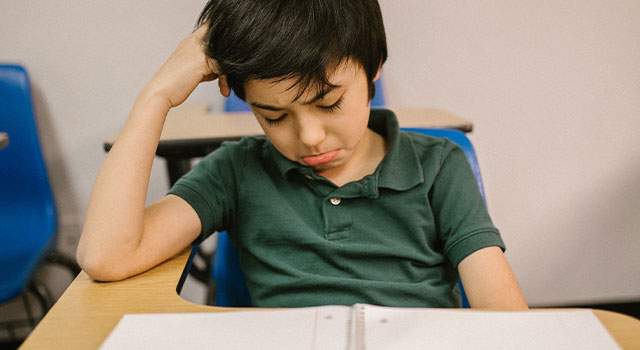 Myopia (also known as nearsightedness) is nothing short of a global epidemic. According to the World Health Organization, 27% of the world’s population has myopia, and that number is expected to rise to 50% by 2050.
Myopia (also known as nearsightedness) is nothing short of a global epidemic. According to the World Health Organization, 27% of the world’s population has myopia, and that number is expected to rise to 50% by 2050.
Myopia almost always begins in childhood and can progress rapidly until the late teens or early twenties. Children with moderate or severe myopia are at a much greater risk of developing eye conditions that can cause vision loss and even blindness.
Fortunately, there are proven ways to slow and sometimes halt myopia’s progression during childhood, to safeguard your child’s vision for a lifetime.
What Causes Myopia?
Myopia is often inherited, but other risk factors include spending too many hours indoors engaged in ‘near work’ like reading and staring at electronic screens.
Myopia occurs when the eyeball grows longer, which causes light rays to refract incorrectly, focusing images in front of your retina instead of on your retina. This results in blurry vision.
How Myopia Can Impact Your Child
Nearsightedness can affect your child in many ways:
Difficulties at School and While Playing Sports
Sometimes parents don’t realize their child is experiencing myopia-related blurry vision until they notice a recurrence of poor grades on their report cards or tests.
Eyestrain
Trying to focus on faraway objects to see them with more clarity when they appear blurry often results in eyestrain. Yet many parents and teachers don’t realize that a child’s headaches, tired, burning, itchy eyes, blurry vision, neck and shoulder pain may be caused by myopia.
Poor Sports Performance
When you try to catch a ball, aim for a target or locate a goal post, you need to see clearly at a distance. Nearsightedness can interfere with a child’s ability to succeed on the sports field.
How Does Myopia Affect Quality of Life?
Myopia isn’t just about difficulty seeing faraway objects. Rapidly progressing myopia increases a child’s risk of developing serious eye conditions in the future. They include:
- Glaucoma
- Retinal detachment
- Cataracts
- Myopic maculopathy
What is Myopia Management?
Myopia management is the area of optometry devoted to slowing down and even halting the rapid progression of myopia in childhood. Myopia can be managed thanks to a customized treatment program provided by an eye doctor near you. The sooner a child’s myopia is managed, the lower the risk of myopia-related complications in adulthood.
To find out how myopia management can transform your child’s vision, confidence and success in life, schedule an appointment with Dr. Andrea Kozma and Dr. Brandon Pham today.
Our practice serves patients from Georgetown, Limehouse, Acton, and Halton Hills, Ontario and surrounding communities.
Q: Can Myopia Be Cured?
- A: While there's no cure for myopia, myopia management has been scientifically proven to slow and at times halt myopia’s progression. LASIK and other laser surgeries aren’t an option until a child with myopia reaches adulthood and their eyes have stopped growing (meaning, their eye prescription has stopped changing).
Q: What is High Myopia?
- A: High myopia is a more severe form of regular myopia, usually above -3.00 dioptres. Children who develop high myopia often have rapidly progressing myopia that begins in early childhood and are at a higher risk of developing serious sight-threatening eye diseases later in life, such as glaucoma, macular degeneration and cataracts. Myopia management can help slow or halt the rapid progression of myopia, offering the child a higher quality of life in the long term.